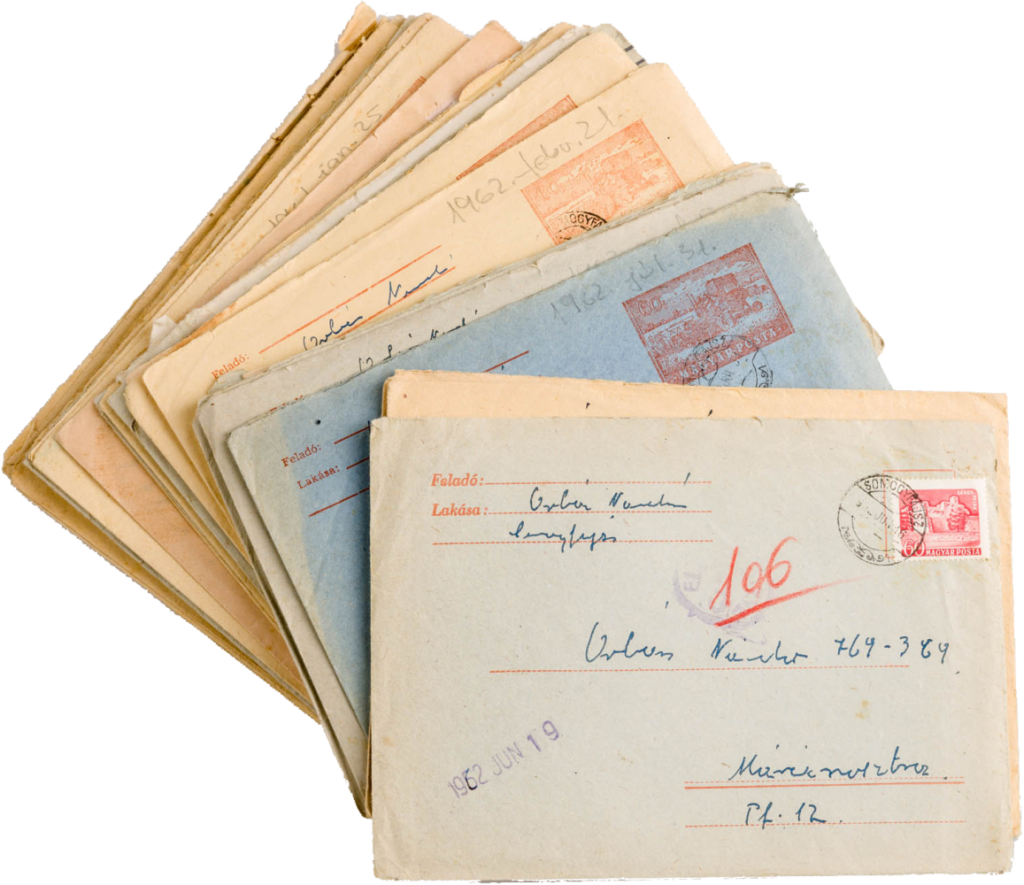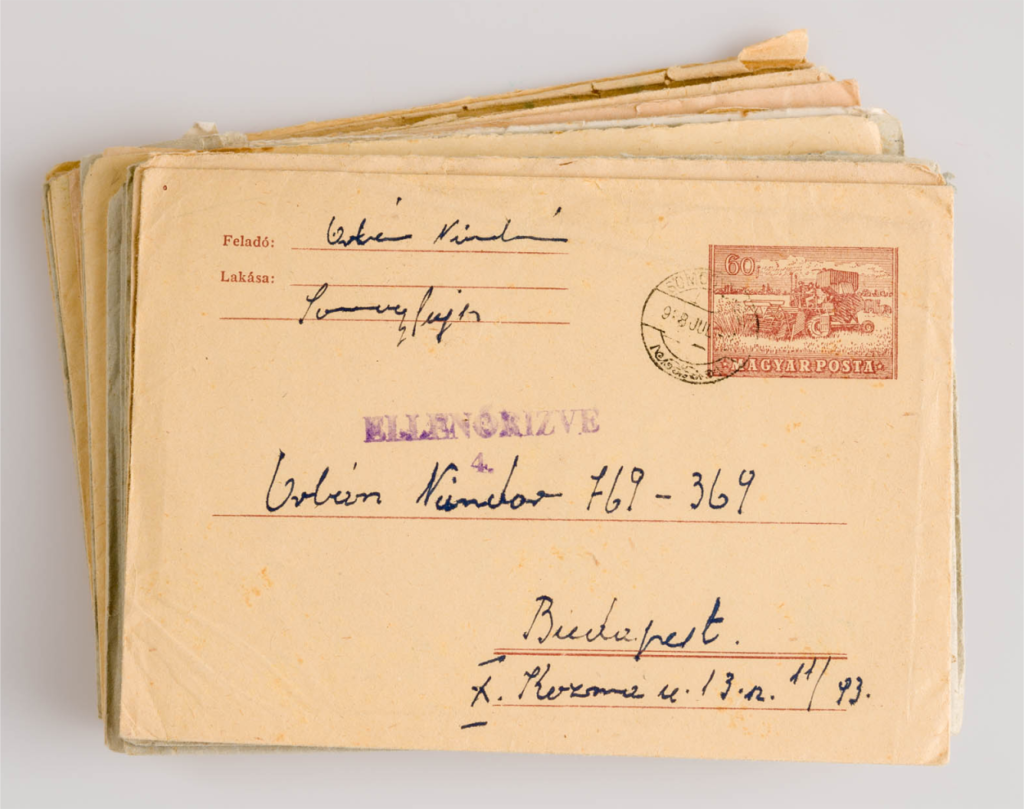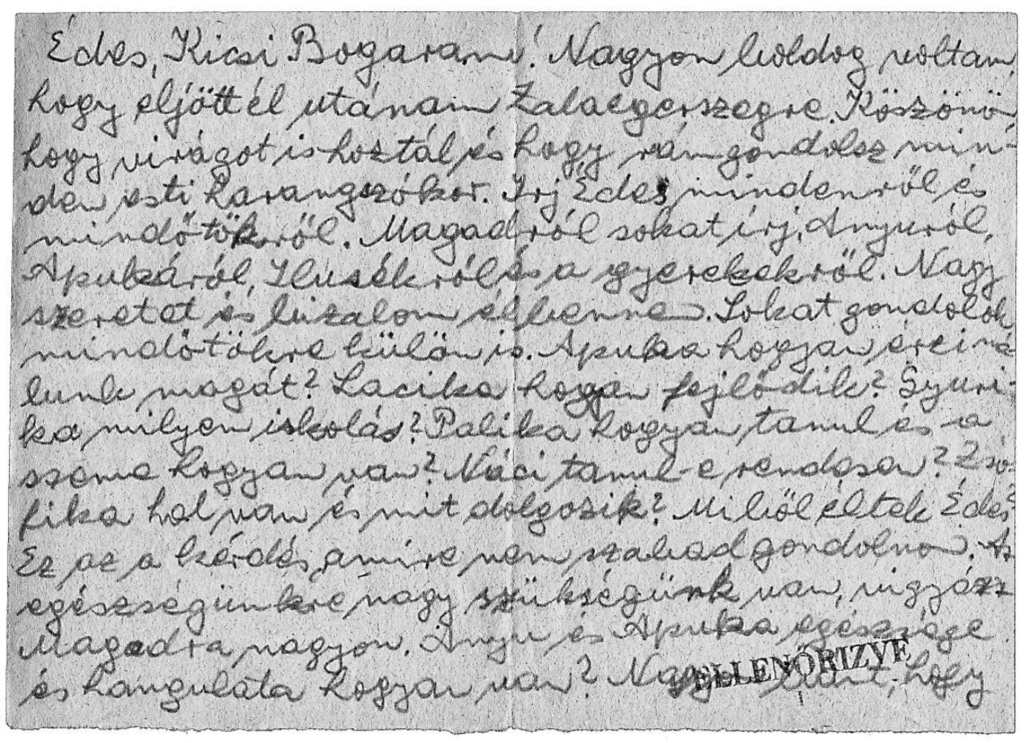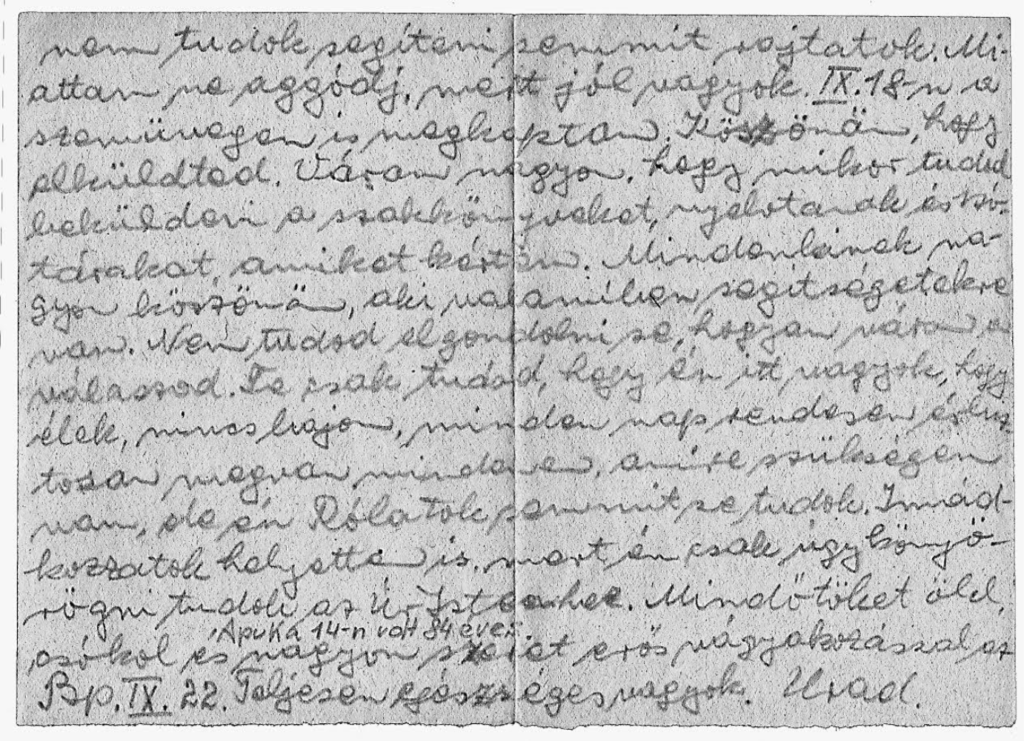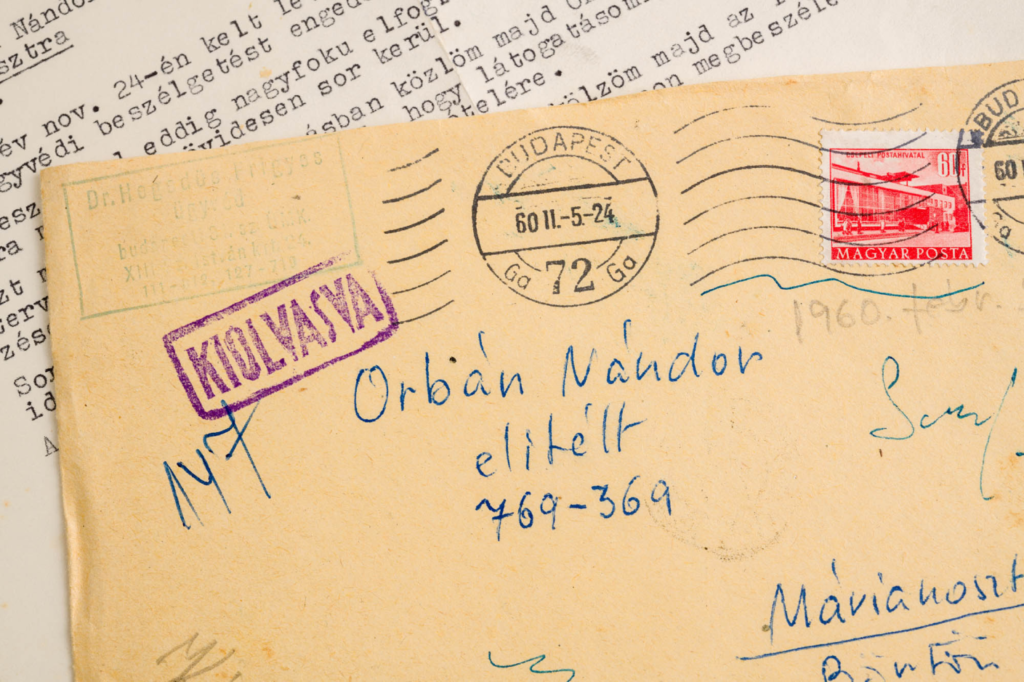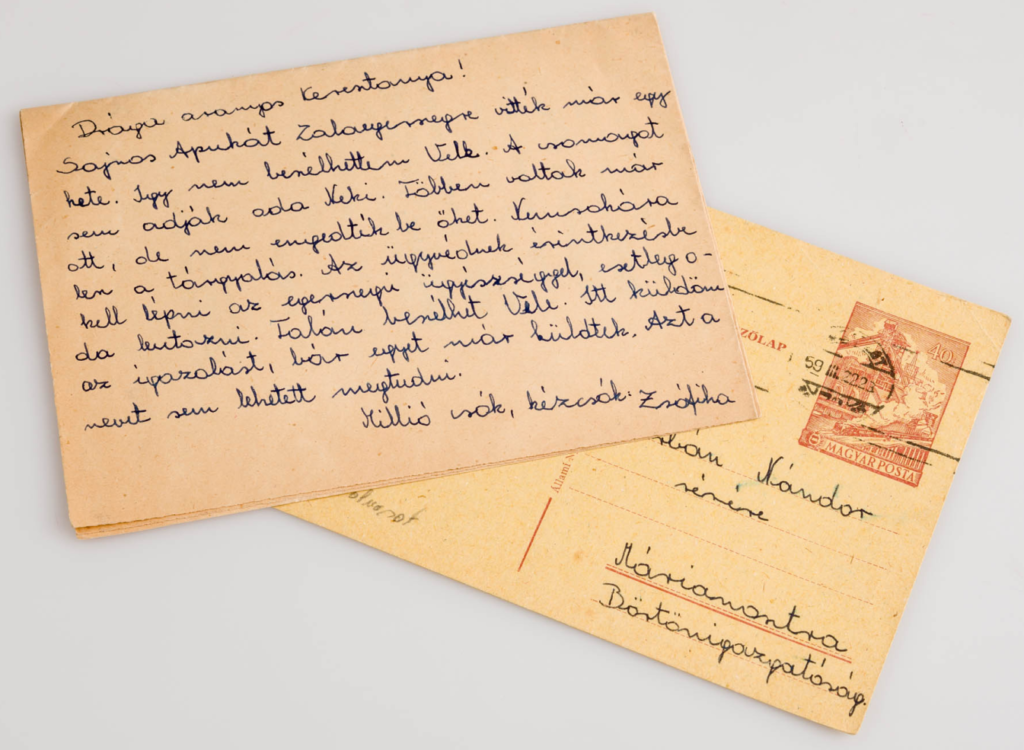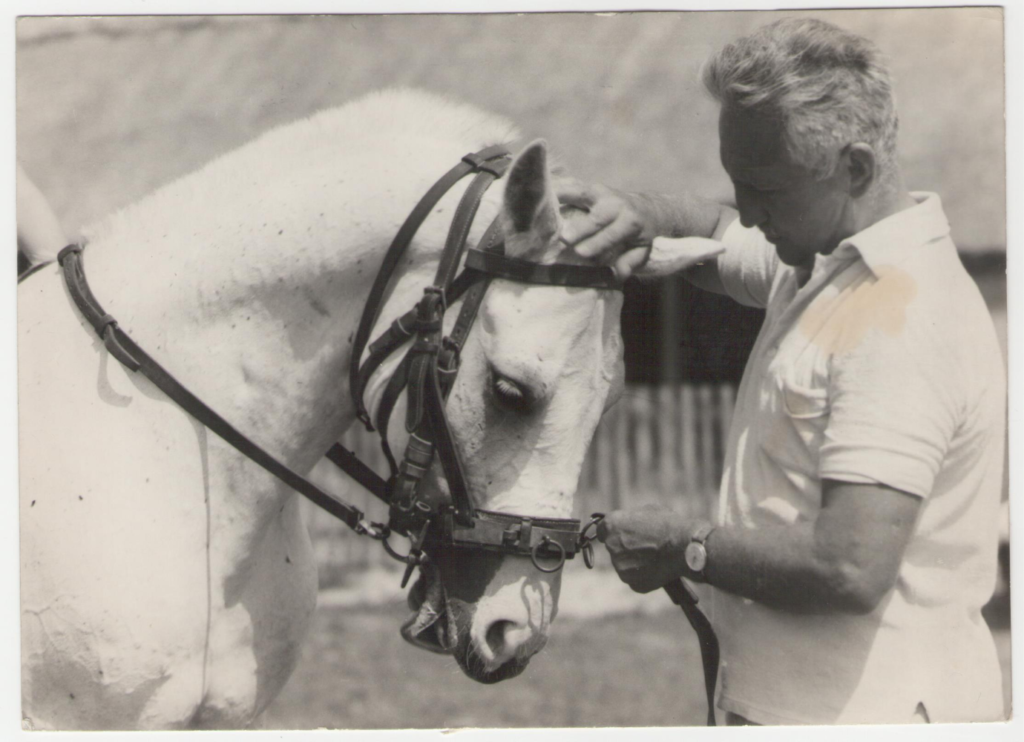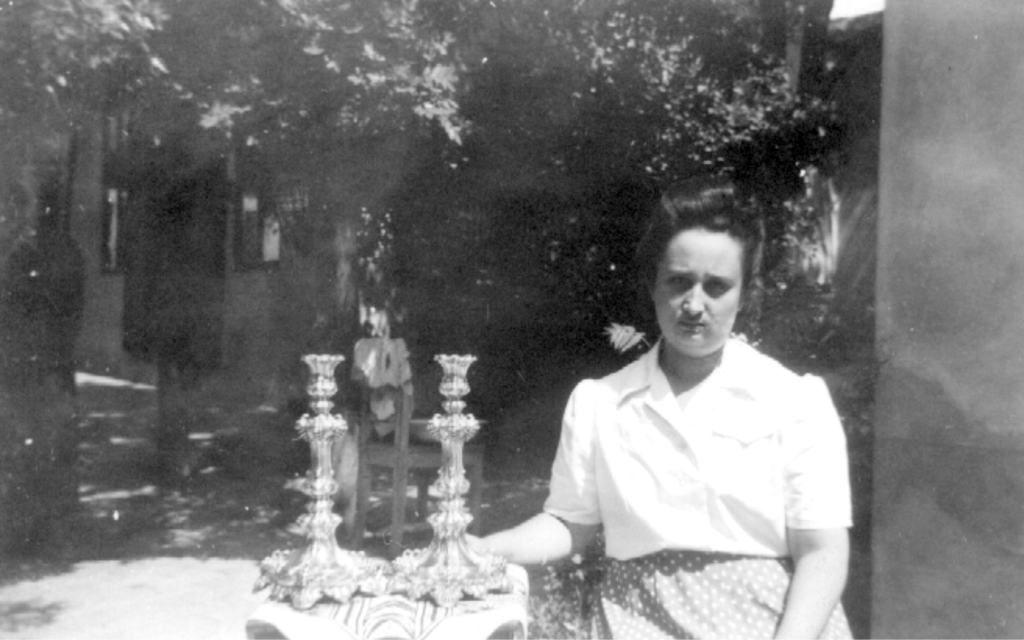A MAN AND A WOMAN: A MEMORIAL / György Orbán
The 1956 prison correspondence of Nándor Orbán (1910) and Zsófia Virágháty (1916).
The Man was sentenced to 15 years of imprisonment at first instance, and to 10 years at second instance, because he had been the commander of the National Guard in Nagykanizsa. The young officer, who graduated from the Ludovika Academy (1933) prepared for war, and he participated in the military operations in the bend of the Don River (1943) as well as in the retreat from Arad to the Muraköz (1944-45). He took up modern pentathlon at the Academy, and he was ranked 5th at the Berlin Summer Olympic Games (1936), being the first Hungarian pentathlete to score points at the Olympics. He also stood to compete at the cancelled Helsinki Summer Olympics (1940). After the war, he could work in a position suitable for his qualifications and skills only for short periods of time (at the stud farm in Somogysárd 1955-56, 1963-65), and he was a target of the secret services of the party-state to the end of his life (1981). His memory is preserved by memorial tablets (Nagykanizsa, Somogyfajsz, Kecskemét) and a statue (Nagykanizsa).
The Woman was born in Balmazújváros, because her wounded father was visited by his pregnant wife. The family fled from Vajdahunyad (1921) to Budapest (living in a railway carriage and at the Juranics complex). After graduating from civil school, the Woman studied to become an elementary school teacher according to the customs of the age. The war broke out soon after she got married (1938). She had five children (1939, 1941, 1947, 1950, 1953). The family fled forced displacement, going from Nagykanizsa to Balatonfenyves, then to Somogyfajsz. Her husband was “recalled” from here to become a commander in the National Guard in 1956. After his arrest in 1957, the mother remained the sole breadwinner of the family. The eldest daughter soon became independent, the older son emigrated to Australia at the age of 15, but the mother still had to provide for the three underage children without a steady income or a permanent job. In this, she was greatly helped by her mother who lived with the family, the widowed Dr. Viktorné Virágháty (1892-1970).
The memorial is an attempt to evoke the memory of an age, a generation, a family and two people. The exhibited letters cannot be read directly. To make them all readable – if by this we mean that they become fully understandable – is a hopeless venture, and everyone can relate to them, according to what he or she knows. The letter is a deeply personal genre, even if it goes through a hostile screening process involving outsiders, as attested by the seals. One of the packages (that of the Woman) is larger, because it was preserved in the prison, whereas the other (that of the Man) is smaller because less attention was paid to preserving them in the family. We may regard this as a metaphoric representation of the asymmetry between the Man and the Woman. These people were members of a generation who were born before/during World War I and lived through World War II, as adults. The course of their lives was determined by the wars and their consequences. As members of the so-called upper middle class, they shared the fate of their class, enjoying its advantages and suffering the consequences of its dissolution. The memorial is a sign and a signal, authentic because the protagonists speak about themselves. Sapienti sat – as the Man would say (Matura in 1928) and this would be agreed by the Woman, whose name, besides the family tombstone, is now preserved by this memorial. They were my parents.
